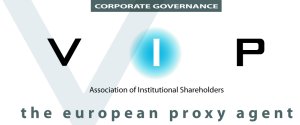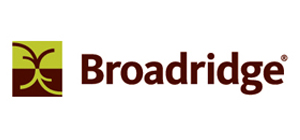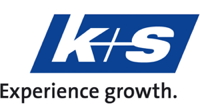Welcome to VIPsight Oceania - New Zealand
 |
|
| Denis Patrick Mowbray |
6 September 2021
|
|
|
27 October 2018
Outside of North America, observers now largely agree that Australia is the jurisdiction in which a corporation is most likely to find itself defending against a class action. Indeed, the number of Australian securities litigation cases has grown markedly in recent years. In 2008, just six (6) cases were filed or investigated to be filed. As of September 2018, and by contrast, twenty-two (22) securities class actions are either being investigated to file or already have been filed in the Courts of Australia with more than two months remaining before year’s end.
18 November 2012
8540Board Chairman Pay Jumps 15.3%
Recent research by the New Zealand Institute of Directors in conjunction with DSD Consulting group has found that the median pay increase for non-executive chairs had risen 15.3%. The Institute's chief executive, Ralph Chivers, thought that this was a reflection of the market catching up with the increased workload that the chairs of boards were required to undertake. He also was quoted as saying that the chair's workload can easily be two / three times as much as an ordinary director.
It is generally accepted that the pay the Chairs of publicly listed companies receives needs to have a premium above that of non-executive directors to reflect the extra responsibilities their position carries. However, with this premium also comes more accountability, so in accepting the pay raises Chairs must in addition accept the culpability of their actions if the situation arises - more.
Ross Asset Management’s Receivership Raises Further Issues
In their report (Ross Report) released today, the receivers said that while the fund purported to have $449.6 million of investments spread across 1720 accounts; they were only able to identify $10.2 million. This supported a statement that indicated that there was a gap between the identified market value of the group’s investments, and the amount reported in investor portfolios. Media speculation has described the fund as being more like a ponzi scheme.
The receiver, John Fisk of PWC, is recommending that the Ross Group entities be placed in liquidation which it is hoped will provide as much certainty as quickly as possible.
New Zealand Ranks tops in Forbes List of Best Countries for Business
The economy conditions within the United States played a significant part in their recent elections as it has in many other countries. A new ranking of the Best Countries for Business saw the United States (US) slip from 10th to 12th position of 141 countries. This means the US is lower than The United Kingdom (No 10), Australia (No11) and Canada (No 5). Meanwhile, New Zealand has climbed one place to take the number-one position in Forbes's list of the Best Countries for Business.
Forbes ranked the 141 countries on 11 different factors: property rights, innovation, taxes, technology, corruption, freedom (personal, trade and monetary), red tape, investor protection and stock market performance.
The research material that supported these metrics was gathered from a range of sources, e.g. Freedom House, Transparency International, World Bank and the World Economic Forum.
New Zealand, whose economy closely tied to that of Australia, has held up better than most during the global financial crisis and its continuing fallout. The resilience of the New Zealand economy has had downsides with the currency appreciating against its major trading partners. However, it's not all roses with the latest unemployment figure the highest since 1999, at 7.3%.
Denmark ranked second, on the strength of it technology followed by Hong Kong (3rd) whose ability to leverage off its strength in international trade, and finance ensures that it remains strong.
19 October 2012
How do boards influence performance?
When BMX Olympic silver medallist Sarah Walker spoke about the importance of her sports psychologist, she highlighted an important aspect of high performance: it takes a team.
Other athletes said the same: they had team help. And they rely on people they trust.
If one member of a team is out of sync, the performance suffers. It could be the coach, the sport psychologist or the manager, or it could be the support organisation.
Like athletes, organisations need their team, board and executive, working towards their goals. Each has its own role – one governs, the other manages. These two, board and executive, are key to an organisation’s success. Understanding their relationship is critical if we are to know how boards influence overall performance.
Some researchers and proponents of “good governance” make inferential leaps from the attributes of a board – for example, independent directors – to organisational performance. Ignoring the critical link formed by the CEO and executive.
In practice, boards influence organisational performance through executives such as the CEO, finance manager, marketing manager etc., who are in effect gatekeepers. So which attributes of a board allow it to do this? By what mechanism does this influence occur? These questions were the focus of my doctoral research from which the discussion below is drawn.
To answer these questions, dual country (New Zealand and Australia) research examined national sporting organisations and other not-for-profits (NFP), as well as corporates from the New Zealand and Australian stock exchange top 50 indices. The final sample included 43 corporate and 21 NFP organisations. Of these, 13 (nine corporate, four NFP) were identified as high-performing.
The measures to identify the high-performing NFP sample were financial. These included measures public support (three measures) and fiscal performance (four measures). The corporate measures were also financial (three measures). These measures were analysed over a ten-year period (1999-2009). An organisations average result over the same ten-year period had to exceed the ten-year average for the total corporate or NFP sample across all measures (7 and 3 respectively) to qualify as high-performing.
Three key areas were identified that allow boards to influence organisational performance through the executive. The first describes the relational space created when the board and executive meet, formally or informally. This is labelled the “third team”. The second finding confirmed the importance of the board’s intellectual capital. Lastly, synergy, trust and confidence were identified as essential attributes of the third team.
Identification of the third team argues against the widely accepted unwritten rule that the CEO is the only point of contact the board has with the organisation. Instead, it finds that organisational performance improves when boards take a proactive approach to developing and maintaining good interactions with the wider executive group in the context of the third team.
Identifying a board’s intellectual capital is important. It needs to know what its current mix of skills and knowledge is and what is missing, an understanding not common among boards. More importantly, it identifies that “intellectual capital is not restricted to a narrowly defined definition but encompasses human capital, social capital, structural capital and cultural capital”.
Identification of the recipe of characteristics present in the third teams of high-performing organisations and absent in those of poor-performing organisations highlights that it is the mixture of characteristics within the third team that is important, not individual board attributes, e.g. a specified number of independent directors
There are two distinct types of characteristics/attributes in the causal recipe:
- Those associated with the board and individual directors (team effectiveness and intellectual capital).
- Those associated with the third team (knowledge sourcing and leader-member exchange).
Furthermore, the findings identified that other characteristics of the third team controlled its ability to access the board’s intellectual capital. “Synergy”, “trust” and “confidence’’ were the defining characteristics that differentiated the third teams of high-performing organisations from those of poor performing organisations.
These were synthesised from three core areas:
- Team effectiveness – how closely the board’s view of its own effectiveness correlated with the executive’s view;
- Leader-member exchange – the level of respect, openness and discretion demonstrated in exchanges between the board and executive team;
- Knowledge sourcing – the ability of the executive to adopt, innovate with and replicate knowledge sourced from the directors into useful approaches to improve the organisation's performance.
The identification of these characteristics that are present in high-performing teams and absent in poor-performing teams is also an important finding of this research. They facilitate board influence on executives who, in turn, impact organisational performance. This finding underscores the importance of the board-executive relationship in determining corporate governance effectiveness.
Other important findings: The intellectual capital of boards governing high-performing and poor-performing organisations is different. Contrary to popular belief, there are significant differences between the intellectual capital requirements of NFP boards and corporate boards. For example, corporate boards and executive identified “effectively monitoring strategy implementation” as the key indicator of board effectiveness. Whereas, NFP boards and executives identified, anticipation of threats, building networks with strategic partners and enhancing government relations as their key indicators of board effectiveness.
Previous research has generally focused on one of three dominant theoretical paradigms (agency theory, stewardship theory and resource dependency theory) as a basis for explaining how a board can influence organisational performance. The addition of the third-team model describes the previously unacknowledged “real’’ team or centre of influence at the apex of an organisation.
The third-team model provides a new way to view the two separately conceptualised teams (the board and the executive) which have in the past been a focus in governance research. The model contradicts the dominant (agency theory) view that these two are separate teams: mutually exclusive and characterised by a subtly adversarial relationship arising from the principal-agent-based monitoring and control role of the board over management.
The third-team model recognises that the board and executive meet episodically and combine efforts to produce a synergistic outcome that is beyond the capabilities of each team or single team member (CEO for example). This view is supported by resource dependency theory, which suggests that the access the executive team has to the individual and collective resources (specific skills and experience, tacit and explicit knowledge, breadth of perspective, contacts and networks) of the board's directors is the key benefit the board contributes via its connection to the organisation.
The third-team model describes the relational space from which this occurs. The model provides a context from which boards can gain a deeper understanding about the issues, assumptions and thinking of the executive in their decision-making. A greater understanding of the inner workings of the executive is consistent with the board's control role (agency theory) in allowing the board to be better placed to guide and oversee executive actions.
Such an understanding also aligns with the contribution each team makes to the organisation (stewardship theory), where, in strategic decision-making, the executive brings in-depth knowledge of the internal aspects of the entity, and the board contributes to the decision process from a wider external perspective and breadth of experience.
Bottom Line
The third-team model challenges the assumption that the CEO is the only employee/executive with whom the board should have direct contact (as implied in agency theory and a characteristic of poor performing organisations within our sample). Such assumptions fail to use the board's intellectual capital as a strategic resource for the benefit of the organisation.
Contrary to popular belief, defining the combined board and executive as the third team does not imply the destruction of organisational hierarchy. In fact, the third team facilitates the continuing existence of hierarchies and structures; it defines how the boundary between board and management is bridged, enabling the board’s intellectual capital to improve organisational performance. Isn’t that what they are there for?
As long as hierarchy and structure add value to performance, there will be a need for the relational space defined as the third team to span these boundaries.
The ability for a board to influence the performance of the organisation they govern ultimately depends not on one single characteristic but on a complex mix of multiple characteristics. Importantly, the research identified that it is specific genes that produce the characteristics that are important in facilitating the board’s ability to influence organisational performance. This has led to the understanding that it is the behavioural governance of the board and executive, combined as the third team that influences organisational performance.
What does behavioural governance mean? It means the board and executive may become more effective in what they do and how they are able to influence the performance of the organisation they govern. The process starts with the following steps:
- Determining if a board’s current processes and practices are conducive to development of an environment that facilitates the third team.
- Analysing the genotypes of the current members of the board and executive to see how they compare with the genotypes of the high-performing sample (corporate or NFP) in this research.
- Identifying from the analysis if the required synergy, trust and confidence are present. If they are not, determining why and what steps are required to facilitate their development.
In sum, high-performing organisations are governed by high-performing third teams that have the specific genes identified in the research.
16 July 2012
Stories for Publication:
Investors may sue Directors;
The fall out continues from the finance sector meltdown and the range of criminal prosecutions of directors that has followed. Investors may now have directors, auditors and trustees in their sights as a wave of civil claims are being considered. Investors who lost an estimated 6 billion NZ dollars in the finance industry collapse are eyeing up an insurance pool estimated to exceed 2 billion NZ dollars.
Already the receivers of Nathan Finance and Bridgecorp, PricewaterhouseCoopers, have filed cases seeking more than half a billion dollars in compensation from the directors and auditors of these failed firms. The expectations of those seeking redress have been supported by a recent court ruling that saw New Zealand’s largest corporate trustee, Perpetual Trust, found guilty of being negligent in its role for two Nelson based finance companies, LDC and Finance and Investors.
While the possibility of access to the insurance pool is an encouraging prospect for those wishing to chase recompense, Bell Gully’s Mr. Tingey, suggested that the possibility of accessing assets held by directors is limited as most directors have their assets protected in trusts and other such vehicles’ (Radio -NZ News).
Tokenism is alive and well.
Whenever the words “board diversity” appears in research, articles, etc., the article is generally not about diversity in the wider sense, it is most times specifically targeting gender diversity. Specifically, the articles are seeking to make a case for regulations (NZ Herald -Article) or quotas that will result in more women being forced on boards. Applying quotas, regulations or in the New Zealand Stock Exchanges’ (NZX) case reporting rules to support what is, in effect, bias for a particular sector, does not support the development of diverse boards with an appropriate mix of skills, attributes, and characteristics, it favours one group above another.
The latest move by the New Zealand Stock Exchange (NZX) sees it planning to introduce a rule that requires listed companies to report the gender diversity policies of their organisation's boards and executives. The question has to be why? What are the benefits of this reporting, does it add value for shareholders, how will this reporting improve the share price, sales or dividends, will it stop companies that have, until now, been well run, continuing to be so, or conversely, bad companies staying bad - the answer is no? Surely, the time of the NZX could be better spent on other issues.
The NZX asked for submissions on this new rule, and as you would expect a number of supporting submissions were received, including one from the shareholders association. Putting aside the appropriateness of adding another policy reporting requirement for a minute, there seems to me a simple solution for anyone wishing to determine the gender mix of a company’s board and executive. Attend the AGM or if that is impossible to read the annual report. In both cases, you will see or read about each director of the board. The diversity of the senior executive may be harder to determine, however, there is a simple and elegant answer – look up the company web site. On the web site, you will see under the heading, “about us” or some equally clever title a list of executive staff and probably a small profile. It would be a pyrrhic victory to suggest that stipulating via a rule of the exchange that an organisation reporting their gender diversity policy is in some way going to correct any perceived or real imbalance in gender diversity. After all if you are going to set reporting rules for gender diversity, should we not also have reporting rules for other facets of diversity such as race, ethnicity, religion, age, etc. (NZ Herald - Article).
The current push from various quarters to lift the levels of diversity (not just women) on boards, while appropriate, largely ignores the complex relationships and interactions that exist and occur between the board and the organisation's executive. Leaving two fundamental questions unanswered – how do boards influence organisational performance and what characteristics differentiate boards that govern high-performing organisations from those who govern poor performing organisations. These are the questions I answered in my doctoral thesis (Available here)
29 December 2011
Stories for Publication:
First female director joins bank;
On the 5th December 2011 The Board of Robobank Australia and New Zealand announced the appointment of Ms Brennan as a director. Ms Brennan is the first appointment of a woman to its board of directors (Media Release - Robobank). For a bank that boasts of having more than 110 years of banking history in the food and agribusiness sector, this first appointment was some time in the making.
The issue of gender diversity continues to make the news in both Australia and New Zealand. The recent Davis review (Davis Review) released in Feb 2011 suggests that FTSE 100 companies will take 70 years to achieve gender balance. Given it has taken Robobank 110 years to appoint its first female director it could be considerably longer than 70 years before gender balance is achieved on Australian and New Zealand Boards.
Of the director positions available on the top 100 publicly traded companies in New Zealand, only 9.3 percent are filled by women. Considering that 34 percent of politicians are women and 41.5 percent of directors in state sector boards are women (NZ Government Newsletter). There must be other factors at play besides availability of candidates, to explain the very small number of women directors on companies listed on the NZ Stock Exchange (NZX).
Regulation, such as that imposed in Norway is often cited as the remedy for gender inequality on Boards. However, regulation is a blunt instrument that has both seen and unseen consequences. If New Zealand organisations wish to avoid regulation on this matter, the clique that currently controls board appointments needs to take voluntary affirmative action before they are forced to.
Australia considers new corporate tax regime.
Australian Treasurer, Wayne Swan is considering the implementation of a proposal known as “Allowance for Corporate Equity." Essentially, the proposal means companies would not be taxed on that portion of their profits that allowed them to achieve a “reasonable” return on their equity. The unknown is how you would define reasonable so that it was, in fact “reasonable” in the eyes of those concerned.
This is like deciding what is “fair." If I tell you, something is fair, and you disagree, it is not fair. If you tell me, something is fair, and I disagree, it is still not fair. It is only when we agree that something is fair that it is, in fact, fair. Deciding what is “reasonable” will be an interesting issue. Interestingly it appears that only banks and big miners would be liable as they enjoy higher returns on equity. Can anyone see the banks and big mining agreeing with a bureaucrat’s definition of “reasonable?”
If instigated its effect on New Zealand may be significant, as any company with a lower than “reasonable” return on equity would be silly not to think of relocating to Australia. With a stock exchange struggling to get any IPOs of substance or new listings the introduction by Australia of the “Allowance for Corporate Equity” tax change could be a real blow to New Zealand. Related Articles, The Daily Reckoning, Sharechat.
4 July 2011
Proxy Battle for Vital Healthcare
A proxy battle is looming for control of the $340 million Vital Healthcare Property TrustAscot Property Management. Mr Sandy Maier wants investors to back its plan to axe Vital's management contract with ANZ subsidiary OnePath. Mr Maier is the former CEO of South Canterbury Finance, now in statutory management. The heart of the battle centres on the bid by OnePath to sell its management contract back to investors for NZ$14m – which Mr Maier and his bid vehicle Ascot Property Management says could be achieved for NZ$4.5m.
Ascot Property Management in a statement said it was well beyond the 10% of unit holders needed to call a special meeting. Two independent directors on the OnePath board had called the bid by ascot, opportunistic. The desired result for Ascot is that both proposals would be put to investors at their annual meeting in August.
Australian Directors found Guilty of Breach of Companies Act
On Monday, Justice Middelton of the Australian Federal Court found eight directors of Centro – a collapsed property company guilty of breach of duty under the Companies Act. They had approved accounts that had failed to declare millions of short-term debt.
Part of their defence was that they had relied on professional advice and that that there was just so much work to be done that they simply ran out of time – typically board papers were about 450 pages in length.
As the Justice commented, the size of the board papers was well within the directors ability to control. He also commented that no director took reasonable steps to take an objective view of the financial statements.
8 February 2011
Discussion is emerging in New Zealand regarding the performance of company directors in light of the New Zealand finance sectors meltdown that occurred recently. This led to many New Zealand company failures and billions of investor dollars lost. Also included in the discussion was the generally poor (there are some great performers) performance of companies that has and continues to occur.
While the discussion is long overdue, it is unfortunate that the comment (started today in the media) that will and has been sought is from the usual limited set of commentators who highlight the usual set of ideas around, growing the pool, diversity in the boardroom etc. The problem being that these same commentators are in positions where they could make an impact, but they take little action or initiate any imaginative discussions.
What is required is a full and frank discussion on how they are measured, the selection and development of new directors and what happens when they fail. Some questions that need discussion are:
- How boards and directors performance can be measured, I mean performance measurement, not some fuzzy / friendly discussion between the chair and their mates; I mean performance measurement where the boards’ performance is measured against company or organizational performance on set criteria (financial and others).
- What are the appropriate measures to use in measuring performance, financial is essential what others?
- How are these set and importantly by whom?
- What happens to directors of a board when the company they are directors of is performing badly? Proxy holders and fund managers should be more accountable in this area.
- How to change the incestuous nature of director selection and retention.
The aforementioned is by no means a complete list of the topics that should be discussed. However, it is a reasonable start.
This is not just a New Zealand issue it is a worldwide issue and not just limited to the commercial world either but just as importantly the not for profit and state owned enterprises sectors as well.
Regulation is not the solution to poor performance – boards have to take responsibility and face up to the fact that when an organization they are directors of performs badly, just like the executive their job is on the line.
13 December 2010
Board reviews benefit the directors and organisation.
Debate in New Zealand continues as to the reasons why the various agencies assigned with the task of overseeing the financial industry failed to notice or take action against the large number of finance companies that failed over recent years leading to the loss of billions of dollars of investors’ money.
Appearing in front of Parliaments commerce select committee who are hearing submissions on the Financial Markets (Regulators and Kiwisaver) Bill, Roger Partridge Chairman of the New Zealand Business Round Table said the Securities Commission had “nodded off”, and failed to use its wide range of powers to tackle inadequate disclosure by finance companies.
It should be noted that an oversight organisation such as the Securities Commission does need a trigger event or complaint before it could act, Securities Commission Chairwomen Jane Diplock said “now I don’t think the Business roundtable or anyone would want the regulator to be able to walk into a well-managed company and just decide on a whim, or a rumour, to do an investigation.”
Ms Diplock labelled as a ”myth” suggestions the commission could have done more to limit the damage from the finance company collapses and further that “fundamentally, it is the directors who failed here, the directors who misled the public in their advertisements and their prospectuses.”
Should the board of directors bear the brunt of the blame for these and other failures?
Simply the answer is yes - it is within the governance structures of organisations that problems initially start and where they are compounded by later decisions or inaction. For example the decision by one finance company to shift from 27 percent of total lending being secured by mortgage to just 6 percent in an 18mth period must have been noticeable to the board in its reporting, this assumes the board knew nothing about it in the first place – which seems unlikely. Why then was it ignored along with other warning signs?
In the finance industry and many others, the strategies that ultimately lead to the demise of the company are agreed and in some cases driven by the board of directors. This is not the first time the governance standards, practices and processes have been found wanting in corporate sector either within New Zealand or internationally. Finance is not the only business sector where the governance capability of organisations has resulted in the destruction of shareholder value or poor results.
What part do governance reviews play in helping to highlight problem areas? Would a governance review have stopped these business collapses?
The answer to the second question is probably not, if directors wish to mislead or misinform investors and regulators they will. That is simply a question of one’s moral and ethical standards and there is plenty of professional help that will help them achieve this.
However reviewing a board’s performance does identify deficiencies in performance and other areas of concern where the governance practices, processes and structures are inadequate. A properly constructed review will also identify for boards the internal and external factors that will impact on their ability to govern the organisation successfully.
Examples being, that at various times prior to their receiverships, major shareholders in at least two failed finance companies, simultaneously held the roles of chairman and managing director.
How then does a board measure its own performance in relation to how it performs all aspects of its duties? By conducting periodic reviews of its performance, governance practices, processes and compliance.
Boards are adverse to their performance being reviewed, why is this? They happily review the performance of the executive, with poor performers being sanctioned and ultimately replaced if the performance does not improve. This is as it should be; boards and individual directors should not be exempt from this process.
Board reviews are not a “tick the box” process. A properly constructed review will take time to complete and will contain three core elements, an internal board review, compliance audit and situational analysis – using specifically designed tools.
If a company or organisation that you are involved with or a board member on has not had its governance performance reviewed in the last two years then you or the organisation are remiss in your duty to ensure that all aspects of the business or organisation are functioning at peak performance.
Reviews of an organisations governance practices, processes and compliance should be looked upon like any other review of a strategically important component within a business or organisation. Reviews are essential in ensuring that the board operates to the highest standards and levels of performance.
Directors and boards should embrace the opportunities that a governance review can bring using the recommendations and outcomes as a springboard to better performance.
Written By: Denis Mowbray.
















